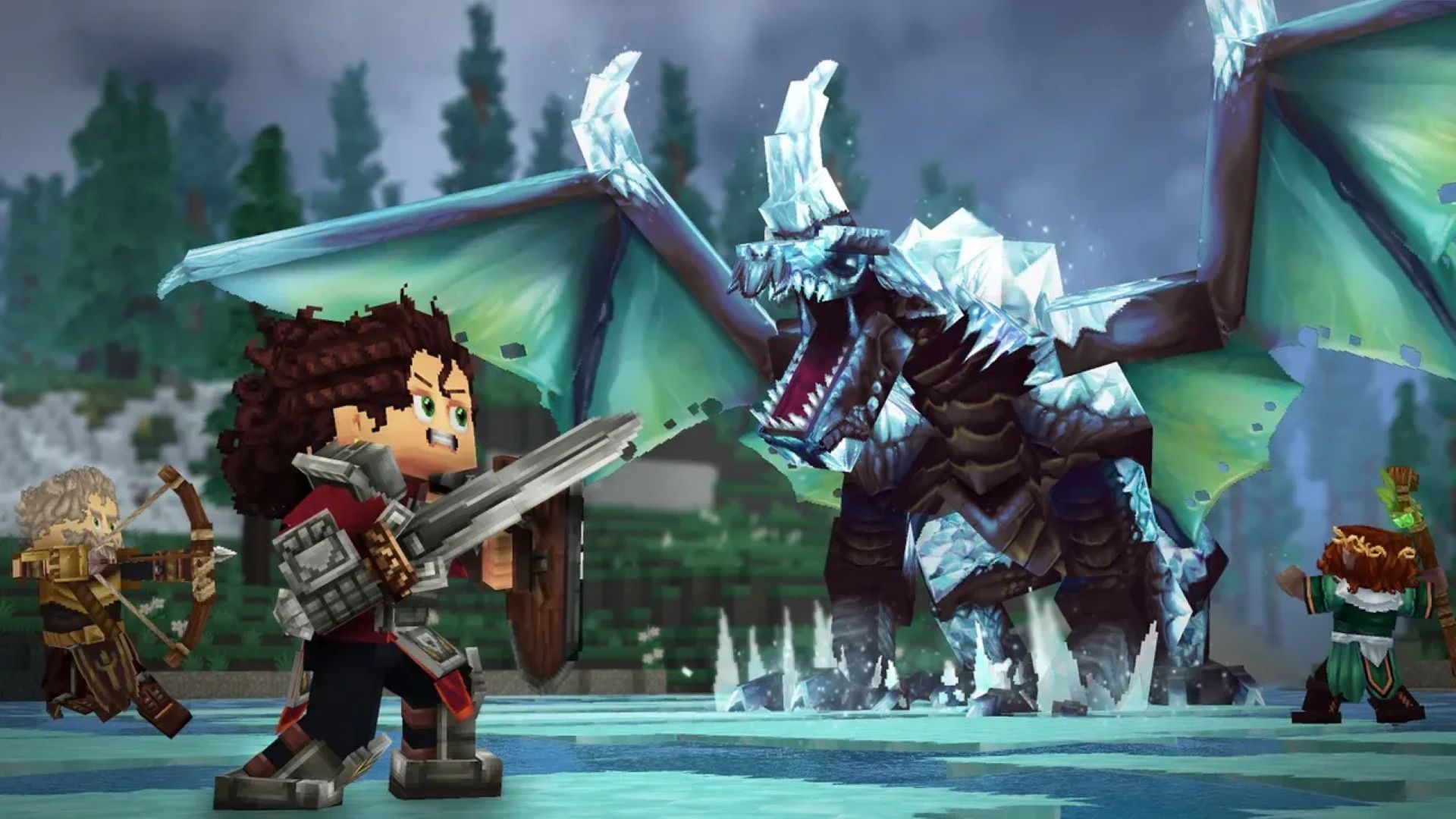
Far Cry’s trip back to 10,000 BC makes me feel like an explorer of deep history. But instead of telling me a story with words, I get to see it happen right in front of me thanks to the vivid game world. Primal is hugely imaginative, and though perhaps largely fantasy, its backdrop is so-well realized that I can feel the layers of time between then and now evaporate, if only briefly.
Scientific and historical accuracy aside, the open-world is smart in the way it connects me with the human dimension of survival and exploration. As Andy
noted in his review, the familiar Far Cry formula has been used to structure this lush sandbox. But since this entry was my first experience with the series, I found it to be a particularly fresh, compelling experience.
A simple gameplay element like fire, for example, becomes useful and dangerous in a way that I instantly understand from a prehistoric point of view. Don’t light yourself on fire, no matter what. And as both predator and prey in Primal’s wetlands, forests, and icy mountains, the fragility of early mankind’s place on the food chain is easy to grasp. I’m reminded of this everytime I hear the snarl of a jaguar or cave lion behind me. But with my spear in hand—and much of the default HUD turned off—it’s also great fun.
In this edition of ‘If you like…’, I’ve gathered some comics, books and films that explore environmental storytelling as well as the confrontation between our modern minds and images of a primordial past. Like Far Cry Primal, they try and account for the facts and fantasies of a long-forgotten world.
Iceman, directed by Fred Schepisi
The “caveman” genre on film has given us everything from from the campy, 1960s Raquel Welch vehicle,
One Million Years B.C., to 1986’s overly-earnest Clan of the Cave Bear. But with Iceman, we get a movie dealing with prehistory that makes a sincere and compelling appeal to our intelligence. In Schepisi’s film, a block of ice is delivered to an arctic research post. The mysterious cargo preserved by the ice is our titular caveman, 20,000 years or so removed from his home. In a scene reminiscent of the best kind of Michael Crichton-style techno-fiction, he’s revived.
Much of the film then deals with what can be learned from the mysterious hunter. Do his blood, brain, and bones have more to tell us than his prehistoric mind? Rather than include a bad trailer from the 1980s, I’ve linked a scene above where the iceman first wakes up in his simulated environment. It neatly sums up the movie’s goal—to show how mysterious it would actually be to confront the past with the present.
The first human

The First Human, by Ann Gibbons
In
The First Human, we have a highly-readable look at fossil hunters working in the field of paleoanthropology. If the hunting-and-gathering world of Far Cry Primal feels recognizable enough with its 10,000 BC time period, Gibbons’s book looks at the scientists whose work seeks to trace a line even deeper into human prehistory.
One question I am still wrestling with in Far Cry Primal is “what came before?” I think Ubisoft’s game, with its distinct tribes and warring factions, wants to hint at this evolutionary mystery as well.
In this way, Gibbons’ book informs many of the reasons why we look at prehistoric peoples the way we do. Her 2007 work serves as a great introduction to many of the problems—and personalities—that dominate this scientific field.
We Were Wanderers on a Prehistoric Earth, directed by James W. Griffiths
This beautifully-shot short film directed by James W. Griffiths, with cinematography by Christopher Moon, was ostensibly made to promote tourism in Malaysia. And while it may or may not have achieved that goal, it exists on its own as a digital painting of nature that brings to mind the fantastic BBC nature documentary,
Planet Earth and the films of Terrence Malick. You can also get of taste of Malick’s work in this smartly-edited three minutes looking at the acclaimed director’s “visual poetry.”
Another filmmaker whose work has long investigated the conflict between man and nature is
Werner Herzog. From the hypnotic Aguirre: Wrath of God to the documentary Cave of Forgotten Dreams, his films have examined mankind’s forced migration from the primal world into the present. Cave of Forgotten Dreams, with its exploration of 20,000-year-old cave paintings from prehistoric Europe, would be of particular interest to anyone thinking through the more mystical storytelling elements of Far Cry Primal.
ElfQuest, by Wendy and Richard Pini
Elfquest

On its surface at least, this classic comic would never be mistaken for a realistic look at prehistoric peoples. But
ElfQuest’s universe of elves, trolls, and humans features a wonderfully-written and illustrated story of tribal life and survival. Confident and mature in its depiction of love, death, and friendship, ElfQuest begins its epic narrative by tracing a single tribe of wolf-riding forest elves on a journey of exile. Initially disturbed after being uprooted from their traditional home, the tribe members are challenged in ways that give them insight into their past as well as their possible future.
And in a way that nicely parallels Far Cry Primal’s blood-drinking fever dreams, ElfQuest happily embraces a view of life that accepts the psychedelic and the mystical as much as other aspects of humanity. Thankfully you don’t have to look too far to see for yourself. You can read
all the original issues for free on the official ElfQuest website.
Patrick currently works as web editor for Hinterland Studios, which is making The Long Dark. For more installments of ‘If you like…’, check out the other games he’s covered in this series below:
![[Video] Battle for DDR. AI Will Devour Us and Itself [Video] Battle for DDR. AI Will Devour Us and Itself](https://media.ixbt.site/1600x900/smart/ixbt-data/1107530/01KBQ5JXY01Y78DDQKFX0HE8D8.jpg)

